Weekly Current Affairs (22nd to 30th June 2025) - 2 | Weekly Current Affairs - UPSC PDF Download
International Day Against Drug Abuse and Illicit Trafficking 2025
Why in News?
- The Ministry of Social Justice and Empowerment (MoSJE) organized a national event on 26th June 2025 to observe the International Day against Drug Abuse and Illicit Trafficking, also known as World Drug Day. This day was established by the UN General Assembly in 1987 to foster global cooperation towards creating a drug-free world.
Key Takeaways
- The theme for 2025 is “Break the Cycle. #StopOrganizedCrime,” emphasizing the need for sustained efforts against organized drug trafficking networks.
- According to the United Nations Office on Drugs and Crime (UNODC), approximately 292 million people used drugs globally in 2022, reflecting a 20% increase over the last decade.
Additional Details
- Drug Affected Regions:Significant areas impacted by drug trafficking include:
- Triple Frontier area (Argentina, Brazil, and Paraguay)
- Golden Crescent (Iran, Afghanistan, and Pakistan)
- Golden Triangle (Laos, Myanmar, and Thailand)
- Common Drugs:The most frequently used substances are:
- Cannabis
- Opioids
- Amphetamines
- Cocaine
- Ecstasy
- India's Drug Control Efforts:The MoSJE serves as the nodal agency for drug demand reduction, prevention, treatment, and rehabilitation, and is involved in nationwide awareness campaigns.
- The Nasha Mukt Bharat Abhiyaan (NMBA) is India’s flagship anti-drug initiative, operational in all districts and utilizing the NMBA App for real-time tracking of activities.
- Digital platforms like NIDAAN and NCORD maintain extensive databases of drug offenders.
This observance highlights the escalating issue of drug abuse, particularly among youth, and underscores the importance of global and national efforts to combat drug-related challenges.
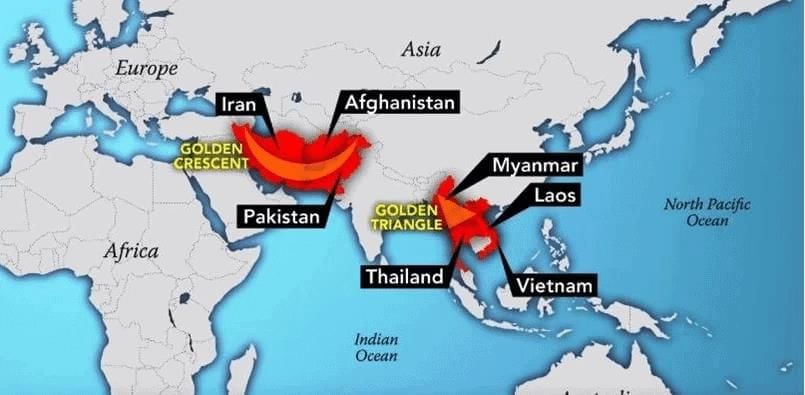
SHGs in India
 Why in News?
Why in News?
- The Ministry of Rural Development (MoRD) and the Ministry of Skill Development & Entrepreneurship (MSDE) have signed a Memorandum of Understanding (MoU) to bolster the Lakhpati Didi initiative. This initiative aims to empower rural women from Self Help Groups (SHGs) by creating 3 crore Lakhpati Didis, who are expected to earn Rs 1 lakh or more annually through sustainable livelihood activities. The initiative aligns rural aspirations with institutional skills, providing customized training in emerging sectors and formal certification.
Key Takeaways
- The Lakhpati Didi initiative is part of the Deendayal Antyodaya Yojana - National Rural Livelihoods Mission (DAY-NRLM).
- As of June 2024, 1 crore Lakhpati Didis have been created, and the target has been raised from 2 crore to 3 crore women.
- The initiative focuses on sustainable income generation and diversified livelihoods.
Additional Details
- Lakhpati Didi: An SHG member who earns Rs 1 lakh or more annually through sustainable livelihood activities.
- The initiative aims to empower rural women economically and socially, transforming them into role models for self-reliance.
- Key implementation strategies include diversified livelihoods and the use of digital tools for training.
The SHG movement is crucial for transforming rural India by empowering women economically and socially. Despite facing challenges such as limited access to credit and managerial issues, strategic interventions and policy support can enhance their impact, contributing to inclusive growth and achieving the vision of Viksit Bharat by 2047.
What are Key Facts About Self Help Groups (SHGs)?
- About SHGs: Informal collectives of 10–20 members, primarily women, formed to enhance economic well-being.
- Evolution: The concept originated from the Grameen Bank in Bangladesh and gained traction in India during the 7th Five Year Plan.
- Functioning: Members regularly meet to manage savings and loans, build bank linkages for larger loans, and receive training on entrepreneurship.
Importance of SHGs
- Promote women's empowerment and financial independence.
- Facilitate access to formal banking services, reducing reliance on moneylenders.
- Support social upliftment and poverty alleviation through income-generating activities.
Challenges Faced by SHGs
- Financial challenges due to limited access to credit.
- Managerial and operational issues, including poor governance and leadership.
- Social and cultural barriers that hinder women's participation.
Steps to Improve SHGs
- Strengthen financial support by simplifying credit access and linking SHGs with government schemes.
- Enhance income opportunities by promoting SHG products on e-commerce platforms.
- Form corporate-SHG alliances for mentorship and capacity building.
In conclusion, while SHGs are a powerful tool for community development and women's empowerment in India, addressing their challenges through policy interventions and strategic support is essential for their sustainability and scalability.
India Sends Second Astronaut to Space
 Why in News?
Why in News?
- India has reached a significant milestone as Group Captain Shubhanshu Shukla becomes the second Indian to travel to space, following Rakesh Sharma's journey in 1984. Additionally, he is the first Indian to set foot on the International Space Station (ISS). This achievement is part of the Axiom-4 (Ax-4) mission, a commercial spaceflight to the ISS.
Key Takeaways
- Group Captain Shubhanshu Shukla is the second Indian astronaut and the first to visit the ISS.
- The Axiom-4 mission marks the fourth commercial flight to the ISS, operated by Axiom Space, in collaboration with NASA.
Additional Details
- Axiom-4 Mission: This mission is the fourth private spaceflight by Axiom Space, a US-based company. It follows successful previous missions (Ax-1, Ax-2, and Ax-3).
- Crew Composition: The crew includes Peggy Whitson (USA, Mission Commander), Group Captain Shubhanshu Shukla (India), Sławosz Uznański-Wiśniewski (Poland, ESA reserve astronaut), and Tibor Kapu (Hungary, Payload Specialist).
- Key Objectives: The mission aims to promote commercial space initiatives, including space tourism and private research, supporting the goal of establishing the first commercial space station.
- Scientific Research: The mission enables research in areas like microgravity effects on materials science, biology, Earth observation, and space agriculture, with studies focusing on human factors and astrobiology.
- Global Collaboration: Axiom-4 features 60 experiments from 31 countries, marking it as the most research-intensive Axiom mission and showcasing international cooperation in space science.
The Axiom-4 mission holds significant importance for India, as it provides essential experience for the Gaganyaan mission planned by India. It lays the groundwork for future independent human space missions, enhancing India's strategic capabilities in space exploration.
Significance of the Axiom-4 Mission for India
- Support for Gaganyaan: Axiom-4 offers critical hands-on experience in crew operations and space biology.
- Strategic & Technological Edge: Strengthening India's position in the global space arena, supporting long-term goals such as an Indian space station by 2035 and a human lunar mission by 2040.
- Global Standing & Economic Growth: ISRO's involvement highlights India's technological competence, boosting international standing and opening avenues for private sector participation and foreign investments.
- Youth Engagement and STEM Promotion: The mission inspires youth and promotes education in STEM fields, helping build a skilled talent pipeline for India's growing space sector.
Key Facts Related to the International Space Station (ISS)
- Significance: The ISS is the largest habitable artificial satellite and serves as a unique space laboratory for scientific research and international cooperation.
- International Collaboration: The ISS is a joint venture involving 15 countries and 5 space agencies: Roscosmos, European Space Agency, JAXA, and Canadian Space Agency.
- Microgravity Laboratory: The ISS hosts over 3,000 experiments from more than 108 countries, enabling vital research in various scientific fields.
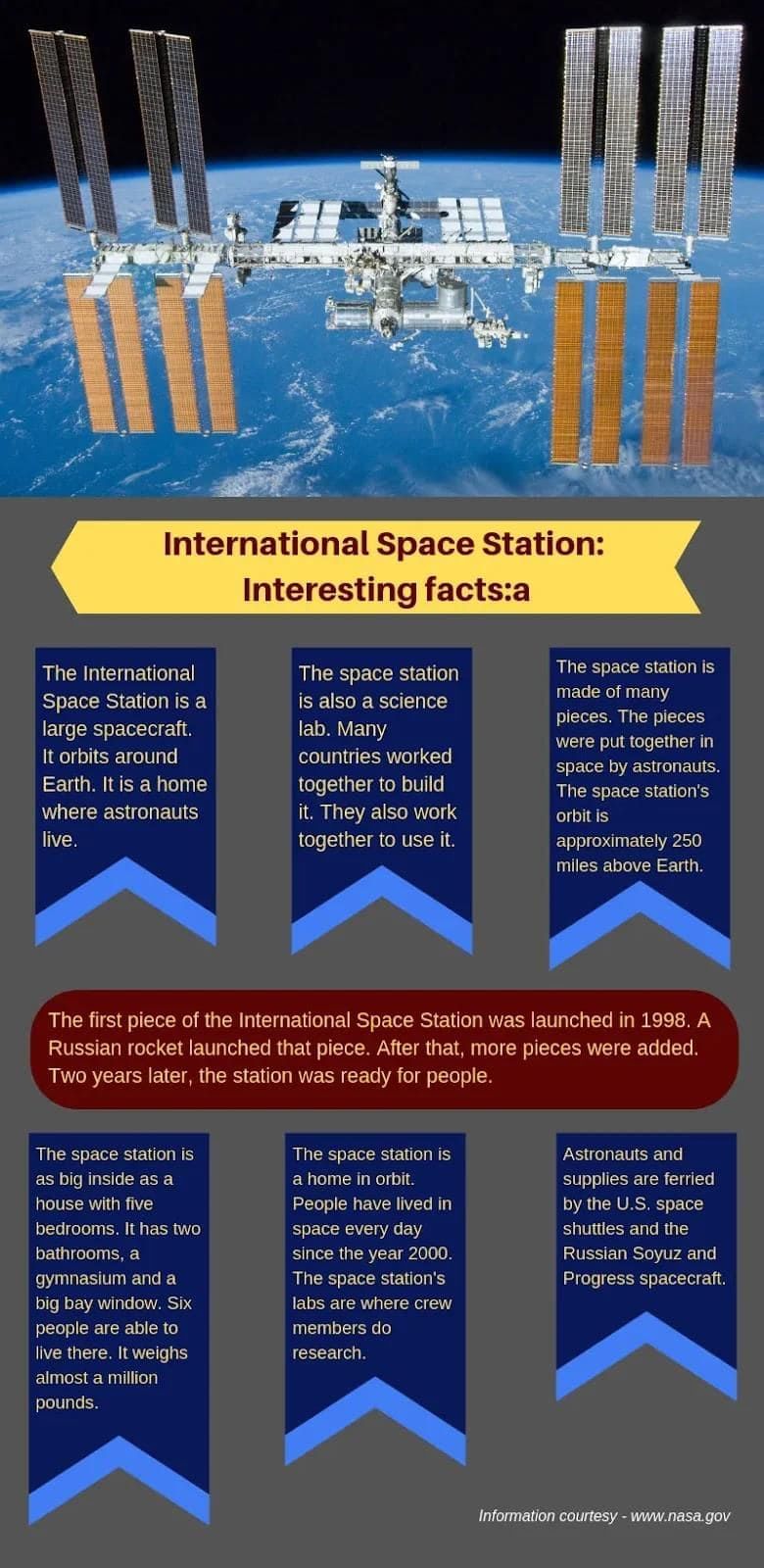
Sagarmala Finance Corporation Ltd (SMFCL)
Why in News?
- Sagarmala Finance Corporation Limited (SMFCL) has been established as India's first maritime sector-specific Non-Banking Financial Company (NBFC). Its primary objective is to enhance financial access within India's maritime ecosystem.
Key Takeaways
- SMFCL operates as a Mini Ratna (Category-I) Central Public Sector Undertaking (CPSU) under the Ministry of Ports, Shipping and Waterways.
- It was previously known as Sagarmala Development Company Ltd.
- SMFCL provides customized financing options to various stakeholders in the maritime sector.
Additional Details
- Beneficiaries:SMFCL offers short, medium, and long-term financing to stakeholders including:
- Port authorities
- Shipping companies
- Shipbuilding and logistics firms
- MSMEs and maritime startups
- Barge operators, cruise and fishing vessel owners
- Maritime educational and research institutions
- Support Areas:It focuses on critical sectors such as:
- Cruise tourism
- Maritime education
- Shipbuilding
- Renewable energy
- Vision: SMFCL aligns with the Maritime Amrit Kaal Vision 2047, which aims to establish India as a global maritime power.
- It complements the Sagarmala Programme and strengthens the National Blue Economy Strategy for sustainable maritime growth.
- Regulatory Framework: SMFCL is a financial institution registered under the Companies Act of 1956 or 2013, engaged in various financial activities such as lending, investment, leasing, hire purchase, and insurance.
- Unlike traditional banks, NBFCs like SMFCL do not hold a banking license and are not permitted to accept demand deposits (e.g., savings or current accounts).
- NBFCs are regulated by the Reserve Bank of India (RBI) under the RBI Act of 1934.
In conclusion, SMFCL plays a pivotal role in facilitating financial support for the maritime sector, thereby contributing to the overall development of India's maritime infrastructure and capabilities.
Promoting Foreign Universities in India
 Why in News?
Why in News?
- The entry of foreign universities into India marks a significant shift in the country’s higher education landscape. Encouraged by the National Education Policy (NEP) 2020 and the UGC (FHEI) Regulations, 2023, this presents both opportunities and challenges for India’s education ecosystem. While it offers opportunities for global integration and academic excellence, it also raises concerns about equity, access, affordability, inclusivity, and alignment with national priorities.
Key Takeaways
- India's demographic and economic potential provides a vast untapped higher education market.
- Global universities seek diversification due to stagnant domestic enrolments and declining funding.
- Foreign campuses in India can enhance educational access and reduce brain drain.
- Challenges include affordability, regulatory barriers, and cultural integration.
Additional Details
- Demographic Potential: With over 50% of the population under the age of 30 and a Gross Enrolment Ratio (GER) in higher education just under 30%, India is an attractive destination for foreign universities.
- Global Push for Diversification: Countries like the UK, Australia, and Canada are exploring markets like India due to recent visa restrictions and need for revenue diversification.
- Benefits: Foreign universities can provide high-quality education with globally recognized degrees without the financial burdens of studying abroad.
- Challenges: High tuition fees may widen socio-economic inequality, and foreign institutions may face regulatory and cultural challenges in adapting to local contexts.
The entry of foreign universities holds transformative potential for India’s higher education sector. However, their success will depend on adaptation to local contexts, affordable quality delivery, and collaboration with domestic institutions. With the right regulatory safeguards and visionary policies, this initiative can strengthen India’s position as a global knowledge hub.
Impact of Climate Change on Global Food Production
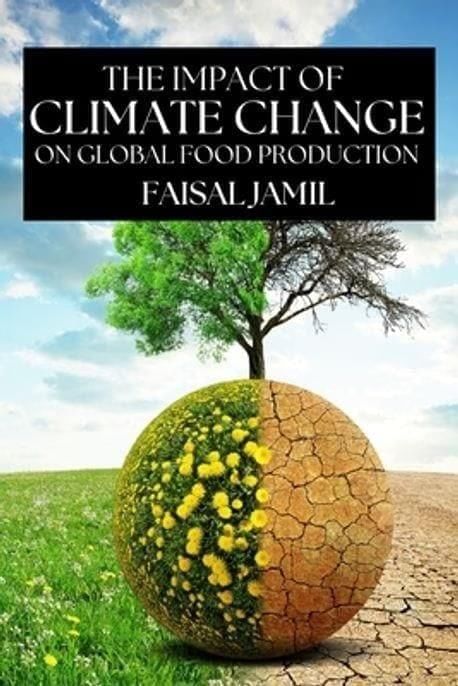 Why in News?
Why in News?
- A recent study highlights the alarming effects of climate change on global food security, projecting that a rise of 1°C in global temperatures will result in a 4% decrease in per capita calorie availability by the year 2100. This decline poses a significant threat to staple crops such as wheat, rice, maize, and soybean.
Key Takeaways
- The study considers farmer adaptation strategies, including the use of heat-resistant crop varieties and changes in sowing and irrigation schedules.
- Farmer adaptations could mitigate losses, potentially reducing declines by 23% by 2050 and 34% by 2100, although rice yields are expected to remain vulnerable.
- Projected wheat yield declines range from 30% to 40%, particularly affecting regions like China, Russia, the US, and Canada, with northern India being the most impacted.
- Rice outcomes are mixed, with significant losses expected in Sub-Saharan Africa, while maize and soybean are also projected to face considerable global declines.
- These losses threaten not only impoverished nations but also major agricultural hubs like the US, Europe, and China, underscoring the urgent necessity for innovation and climate-resilient agricultural practices.
Additional Details
- Farmer Adaptation: This includes strategies such as adopting heat-resistant crop varieties and adjusting cultivation practices to cope with changing climate conditions.
- Global Impact: The findings emphasize the need for cropland expansion and innovative agricultural methods to ensure food security in the face of climate change.
In conclusion, the implications of climate change on food production are severe and necessitate immediate action to develop resilient agricultural strategies to sustain global food availability.
Securing the Indian Ocean Region
Why in News?
- The report from the Parliamentary Standing Committee on External Affairs emphasizes that the increasing presence of extra-regional players in the Indian Ocean Region (IOR), particularly China's expanding influence, presents a considerable strategic challenge for India.
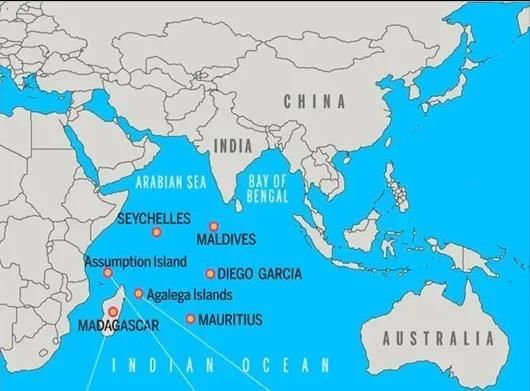
Key Takeaways
- China's strategic investments in dual-use infrastructure are reshaping the IOR.
- The military expansion and naval deployments by China pose significant threats to India.
- India's economic lifelines and geopolitical influence are at risk due to China's actions.
Additional Details
- Dual-Use Infrastructure: China is developing ports, airports, and logistics hubs in IOR littoral states, exemplified by projects like Hambantota in Sri Lanka (leased for 99 years) and Gwadar in Pakistan (part of the China-Pakistan Economic Corridor, CPEC).
- Military Expansion & Naval Deployment: The establishment of the Djibouti military base in 2017 has allowed China to enhance its naval operations in the IOR, leading to increased warship deployments.
- Debt-Trap Diplomacy: Projects under the Belt and Road Initiative (BRI) often result in unsustainable loans, creating debt traps for countries like Sri Lanka and the Maldives, increasing their dependence on China.
- Threats to India: China's strategic ports allow it to monitor Indian naval activities, potentially disrupting vital trade routes that India relies on for its energy security.
- Geopolitical Threats: China's expanding influence in neighboring countries threatens to isolate India and undermines its strategic autonomy.
As China continues to assert its dominance in the Indian Ocean Region, India faces mounting challenges to its national security and economic interests. To counter these threats, India must adopt a multi-faceted strategy to bolster its naval capabilities, enhance diplomatic ties, and invest in regional partnerships.
19th Statistics Day and Contribution of PC Mahalanobis
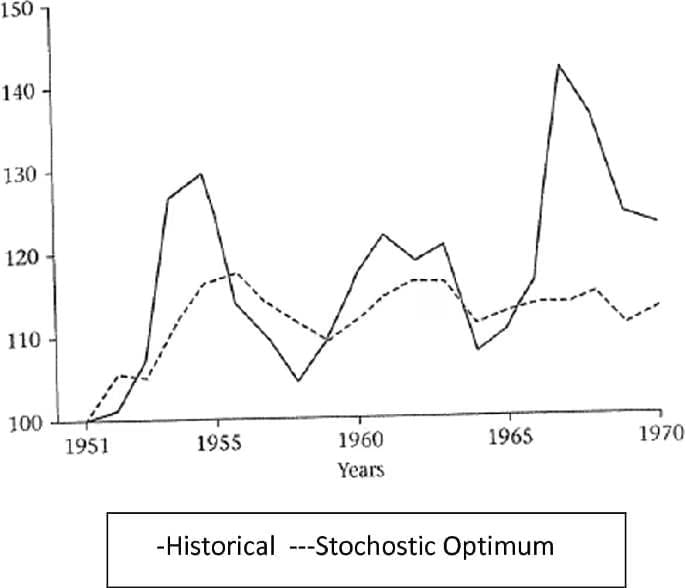 Why in News?
Why in News?
- The 19th Statistics Day was celebrated on June 29, marking the 132nd birth anniversary of Prasanta Chandra Mahalanobis. This year's theme was "75 Years of National Sample Survey," emphasizing the critical role the NSS plays in strengthening India's statistical framework. To commemorate 75 years of the NSS, the government introduced the GoIStat app, awarded the 2025 Prof. C.R. Rao Award to Dr. Prajamitra Bhuyan for his excellence in statistics, and published the SDG National Indicator Framework Progress Report, 2025.
Key Takeaways
- Celebration of Statistics Day on June 29 honors PC Mahalanobis.
- The theme focuses on the NSS's contributions over 75 years.
- Launch of the GoIStat app and recognition of Dr. Bhuyan.
Additional Details
- About National Statistics Day: Initiated by the Government of India in 2007, this day is observed on June 29 to honor and promote awareness about the significance of statistics in policy-making and governance.
- About PC Mahalanobis:Born in Calcutta (now Kolkata) in 1893, Mahalanobis was a prominent Indian statistician known for several key contributions:
- Mahalanobis Distance: A metric used to determine the distance of a point from the average in multi-dimensional data, significantly utilized in areas like face recognition.
- Indian Statistical Institute: Founded in 1931, it is a premier institution for research in economics and data science.
- Second Five-Year Plan: Appointed to the Planning Commission in 1955, Mahalanobis advised Prime Minister Nehru on industrialization, focusing on heavy industries through the Mahalanobis Model.
- Feldman-Mahalanobis Model: An economic growth strategy that emphasizes investment in key industries to establish a robust industrial base for long-term self-reliance.
- About National Sample Survey: Established to conduct extensive sample surveys across India, the NSS has been vital in collecting data through household surveys, the Annual Survey of Industries (ASI), and monitoring crop statistics.
- About MoSPI: The Ministry of Statistics and Programme Implementation was formed on October 15, 1999, and plays a crucial role in statistical data collection and program implementation.
In summary, Statistics Day serves not only as a tribute to PC Mahalanobis but also highlights the importance of statistical data in shaping India's development policies and governance, reinforcing the role of institutions like the NSS and MoSPI in this endeavor.
|
287 docs|142 tests
|
FAQs on Weekly Current Affairs (22nd to 30th June 2025) - 2 - Weekly Current Affairs - UPSC
| 1. What is the significance of the International Day Against Drug Abuse and Illicit Trafficking in addressing global drug-related issues? |  |
| 2. How do Self-Help Groups (SHGs) contribute to the empowerment of women in India? |  |
| 3. What are the objectives of the Sagarmala Finance Corporation Ltd (SMFCL) in enhancing India's maritime sector? |  |
| 4. What measures is India taking to promote foreign universities and enhance its higher education landscape? |  |
| 5. How is climate change impacting global food production and what are potential solutions? |  |





















